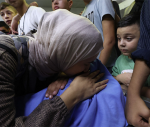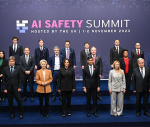You are here
Rethinking the fight against violence against women
Nov 27,2017 - Last updated at Nov 27,2017
Two real-life incidents to which I was a direct witness contributed to shaping my perception of violence against women.
At the age of 12, I woke up one morning to the news of the killing of my next-door neighbour who rejected her father’s plan to have her get engaged at the age of 14 to someone who was 26 years older than her and who she had not known or ever met.
She took the decision to flee and spend the day at a female friend’s house. Her father, infuriated, submitted to his friends, and would-be fiancé of his daughter, an evil scheme to cleanse the “honour” of the family by killing his daughter. He picked up a gun and shot his daughter four times point blank at her friend’s house.
I went to see her when they brought her body to her house before burial. The three days of condolences ended and the sorrow of many over her tragic and untimely death ended with it as well.
I, and many friends who knew her, never recieved closure to this very day.
The father was prosecuted and sentenced to six months in prison. When he was released, he got a hero’s reception from his relatives and friends.
Another event that marked me was that of my classmate who was in love with romantic fiction and used to borrow books from a bookstore downtown in one of the cities, primarily Riwayat Abeer. On one occasion and without any forewarning, she was blatantly harassed by the bookstore owner. She went home terrified and dared not share her story with anyone except me.
She suffered a lot, as she did not know what to make of what happened. She lived her life thinking that she had been complicit in the unfortunate act. She stopped going to the bookstore, stopped reading and stopped viewing life romantically.
Three decades after these two events, where are we now in our fight against such and other forms of violence against women?
Admittedly, fighting the phenomenon has been going through many phases: preventive, eliminative and transformative. The impact, however, has not yet reached a tipping point — at least as far as our expectations are concerned.
To fight sex-based discrimination and violence, some countries drew plans and implemented reforms to help eradicate the discriminatory processes, apparatuses and tactics that feed gender discrimination and naturalise violence. Nevertheless, men still enjoy a disproportionate share of society’s resources, rewards and privileges, while women are still defined by patriarchy, binaries, and subjugation, and are often deprived of equal opportunities in the utilisation of their agency, competitiveness, talent and freedom of choice.
These are not only indicators of the subjugation of women, but also the very tools that perpetuate the use of violence against women.
Unfortunately, the implementation processes and the ultimate attainment of core principles in fighting gender discrimination and violence against women, in Jordan and the Arab world at large, are impeded by many factors.
First is the fluid definition of violence against women. Although the phenomenon has been limited in some countries and prevented in others, violence against women has also gone through adaptability on how it “vernacularises” and normalises itself in many other countries, at times camouflaged in deformed regulatory frameworks, social mores and patriarchal ideologies.
The regulatory context should be closely read and examined to uncover the underlying structures of discrimination and marginalisation that trigger violence against women and shape public opinions and sentiment.
The second, equally important, is directly linked to the current turmoil in the region.
Jordan has found itself at the receiving end of the human disaster that emanated from the militarism and chaos in the region. Furthermore, due to the deterioration of security in many neighbouring countries, Jordan’s security has, understandably, become of prime importance.
Making the country’s security a matter of priority, however, sidelined other important issues, including women’s empowerment, rights and the fight against violence against women.
Third, although there are significant studies on the underlying structures and intrinsic layers of subjugation and violence targeting women and girls, they are not satisfactory. There are some gaps in studies and knowledge building, which led to paradoxical readings, outcomes and findings.
Studies on how intrinsically violence against women intersects with socio-geopolitical and economic variables and factors and their impact are limited. There is, also, a deficit of academically grounded understandings of the structures and strategies of power as it negotiates itself to exist and function in various discourses and contexts.
In a country where seniority and patriarchy hold the upper hand, women, girls and youth are victims of violence, exclusion and marginalisation.
Fourth, the school environment and the overall learning experiences are the first platform where concepts, beliefs, values, mindsets, thinking and habits are built and gender identity is internalised.
Emptying the narrative in school textbooks of women and girls and of their contribution to cultures and societies deforms students’ understanding and perceptions, and condition a student’s imagination. This builds generations that suffer from internal conflicts, torn between slogans of equality, on the one hand, and practices and performances rooted in gender gaps and absence of equality, on the other. It might even lead to violent behaviour when conventions and sets of beliefs are perceived to be threatened by contradictory realities.
Fifth, women have always been burdened by the symbolisms attached to their bodies: cultural identity and national honour. Their bodies could represent ideas, ideologies or even commodities. This, in certain societies allows external forces to coercively exercise ownership over women’s body, and thus censor, police and dominate it.
This kind of violence is not only endured and internalised in societies, it also becomes a normalised reality in which some start to falsely believe in the “worthlessness” and subjugation of women.
As a result, there is a political, even existential, necessity to revisit the meaning of universal rights and tell the stories of abused women, not just give statistics.
In Jordan, old, familiar, binary perceptions must be changed and women must be acknowledged as equal citizens if the violence against them is to come to an end.
The writer, an associate professor and an acting dean at the American University of Madaba, is an expert on gender and feminist theories. She contributed this article to The Jordan Times.
- Popular
- Rated
- Commented
Nov 03, 2023
Nov 03, 2023
Oct 31, 2023
Nov 03, 2023
Newsletter
Get top stories and blog posts emailed to you each day.











